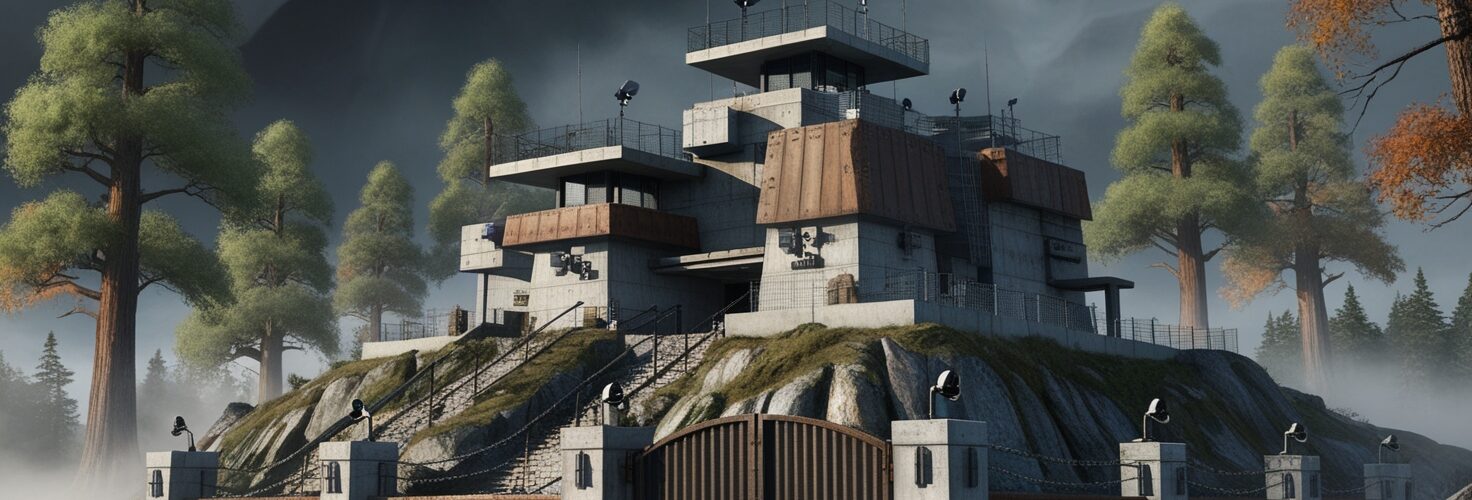
Picture this: you’ve set up your survival base, a cozy little haven in the wilderness. You’ve built a shelter, gathered supplies, and even managed to find some food and water. But wait!
What about securing your perimeter? After all, the great outdoors can be as unpredictable as a cat on a hot tin roof. Let’s dive into how to protect your survival base so you can focus on thriving instead of just surviving.
Understanding Threats
Before we jump into fortifying your space like it’s a medieval castle, let’s take a moment to understand what threats might lurk in the shadows. In the wild, danger can come from various sources—wild animals, other people (yikes!), or even natural elements like floods or falling trees.
First off, wild animals are often more scared of you than you are of them. However, it doesn’t hurt to be cautious! Familiarize yourself with local wildlife; know which creatures might pose a threat.
For instance, bears and mountain lions should definitely be respected! If you see signs of their presence—like tracks or droppings—it’s time to reconsider your location.
Then there are other humans. Whether they’re fellow adventurers or not-so-friendly individuals looking for easy pickings, being aware of your surroundings is crucial. Always trust your instincts; if something feels off, it probably is!
Finally, consider environmental threats too. A sudden storm could wreak havoc on your setup if you’re not prepared. Knowing the weather patterns in your area helps you anticipate changes before they become emergencies.
Creating Physical Barriers

Now that we’ve identified potential threats let’s talk defense strategies—starting with physical barriers! Think of these as the first line of protection for your survival base.
One effective method is building fences or walls using available materials such as branches and logs. A simple barrier can deter curious critters while giving you peace of mind. If you’re feeling particularly ambitious (or perhaps bored), consider creating a palisade—a wall made from sharpened stakes driven into the ground!
Additionally, make sure any entry points like doors or flaps on your shelter are secure when night falls. You wouldn’t want an unwelcome visitor crashing at 3 AM while you’re trying to catch some Zs!
And here’s another tip: use natural features around you to enhance security. Positioning your base near cliffs or dense foliage can create additional layers of protection against intruders—both animal and human alike.
Setting Up Warning Systems
Alright, so you’ve got barriers in place—but how do you know when someone (or something) is approaching? Enter warning systems! These clever setups act like alarm bells for potential intruders.
A simple yet effective method involves creating noise traps using twigs or cans tied together along pathways leading toward your base. When someone—or something—steps on them, they’ll make enough racket to wake even the soundest sleeper!
You could also use reflective objects like shiny aluminum foil hung from branches that flutter in the wind; they’ll alert you visually if movement occurs nearby during daylight hours.
For those who prefer high-tech solutions (and have access), motion sensors can provide advanced alerts about movements around camp—just remember batteries don’t last forever in remote locations!
Practicing Situational Awareness
Now that we’ve fortified our perimeter and set up warning systems let’s discuss one vital skill: situational awareness! This isn’t just about keeping an eye out for danger; it’s cultivating an instinctive understanding of what’s happening around us.
Start by regularly assessing both immediate surroundings and broader environment changes throughout each day—from shifts in animal behavior indicating possible dangers lurking nearby down to unusual sounds that may signal trouble ahead.
I recommend taking moments during quiet times at camp simply observing nature—the way birds fly overhead or how squirrels scurry about can reveal much more than meets the eye!
By staying alert without becoming paranoid (there’s a fine line!), you’ll better prepare yourself for any surprises life throws at ya—and trust me; surprises will happen!
Building Community Connections
Finally—and perhaps most importantly—don’t underestimate the power of community connections! Surviving alone might seem appealing at first glance but having allies offers numerous benefits when securing safety becomes paramount.
If you’re not already partaking in group adventures within outdoor communities online/offline before heading out solo trips now would be wise!
Finding trusted companions allows sharing responsibilities related directly back toward protecting perimeters together rather than going solo through challenges faced individually later down road trips taken unpreparedly beforehand!
Moreover forming bonds with locals familiarized themselves with terrain around where plans lay helps navigate tricky situations easier due knowledge shared over coffee breaks exchanged stories told amongst friends gathered around campfires underneath starry skies above heads shining bright every night spent together laughing heartily until dawn breaks once again…
Suggested Resources:
Survival Skills Guide
https://www.survivalskills.com
Wilderness Survival Techniques
https://www.wilderness-survival.net
How to Build a Shelter
https://www.outdoorlife.com/shelter-building-guide




